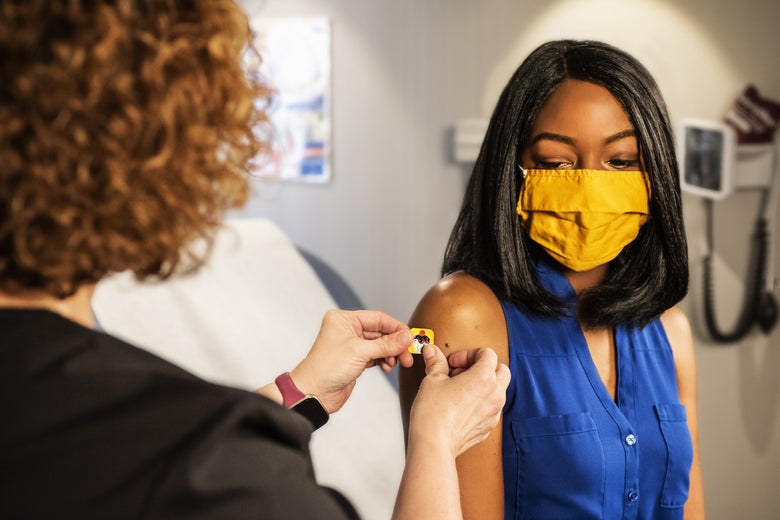
A version of this article first appeared on Gary Cornell’s blog.
You might have recently come across a headline declaring something like: “75 percent of new cases are among the vaccinated.” This was the case, for example, in the early July outbreak in Provincetown, Massachusetts, and during a four week timespan this summer in Singapore.
Of course, the story that follows will explain that there were almost no hospitalizations among the infected-yet-vaccinated group, and no deaths. But even with those caveats, leading with the fact that most infected people in a group were vaccinated is unnecessarily panic-inducing.
In fact, a statement like “75 percent of new cases are among the vaccinated” is almost totally meaningless. And, as vaccinations continue to ramp up and COVID continues to circulate, we’re only going to be seeing more of these headlines. The best way to understand why these kinds of statements are always misleading is to use a very useful technique that every mathematician learns–and is easy to use and very useful for non-mathematicans as well: come up with an extreme hypothetical and check if the statement makes any sense in the hypothetical.
Here’s the extreme hypothetical I’m going to use as an example. I want you to imagine someone is publishing the 75 percent “statistic” about a place where there is a population of 20 million people, and 99 percent of them are fully vaccinated (if only!). You would think that with such a high vaccination rate (the extreme case), that vaccinated people are very safe—but the statistic seems to suggest the opposite. So let’s continue the thought experiment: Say this population reports 200,000 new cases of COVID, and of the 200,000 new cases, 150,000 of them were in the vaccinated population, and 50,000 were in unvaccinated people. That indeed puts 75 percent of the 200,000 cases in vaccinated people. And now anyone who reads that headline has a big number like “75 percent” stuck in their head. Scary!
But what’s really going on? It may appear at a superficial glance that the risk to vaccinated people is actually high. But the better question to ask is: What are the odds of your actually being among that group of sick people if you are vaccinated—and what are the odds of your getting sick if you are unvaccinated?
All you need is a little high school arithmetic to calculate the odds. The total number of unvaccinated people in our hypothetical population is 200,000 (1 percent of 20 million). So the odds of getting sick if you were unvaccinated are: 50,000 divided by 200,000. That’s 1 in 4—or 25 percent.
But if you are vaccinated the odds are 150,000 divided by 19,800,000. That’s a bit less than 1 percent (about three quarters of a percent if you do the calculation).
In other words, if you are unvaccinated in this extreme hypothetical, the odds are 33 times worse for you even though most cases are in the vaccinated group.
How does that make sense? The reason is that there are far, far more vaccinated people overall in our extreme hypothetical . And while there might not exist a land where nearly everyone is vaccinated, there are places and situations in which the majority of people are. This is the case in Singapore, where, yes, the majority of cases reported have been among the vaccinated.
I hate to remind you about a subject you probably didn’t like all that much in high school but it really is all about the “denominators.” If the denominator you chose in a calculation—the thing you’re dividing by—is the wrong one, you have fallen victim to what is called “the base rate fallacy.”
In the case of the 75 percent “statistic,” in our hypothetical, the calculation to get there was: 150,000 divided by 200,000. This uses the total number of cases of COVID-19 as the denominator—not the total number of vaccinated people (19,800,000). It produces a striking number—but it tells you nothing odds of getting the disease if you are vaccinated. In fact, it tells you nothing except that you should read the piece for more information (though by now, you might suspect that it also tells you an awful lot of people involved must be vaccinated).
Yes, this is an extreme situation. And the “odds” that you will get an infection depend on much more than a few simple numbers. But I hope it helps you become properly suspicious of any headline that declares “X of the cases are among the vaccinated.” Whenever you see headlines like this, ask what the vaccination rate is. And then, do some arithmetic.
"Occur" - Google News
August 05, 2021 at 12:31AM
https://ift.tt/3yraxJJ
What Does it Really Mean When a Headline Says “75 percent of Cases Occurred in Vaccinated People”? - Slate
"Occur" - Google News
https://ift.tt/2Qqpsjw
Shoes Man Tutorial
Pos News Update
Meme Update
Korean Entertainment News
Japan News Update
Tidak ada komentar:
Posting Komentar